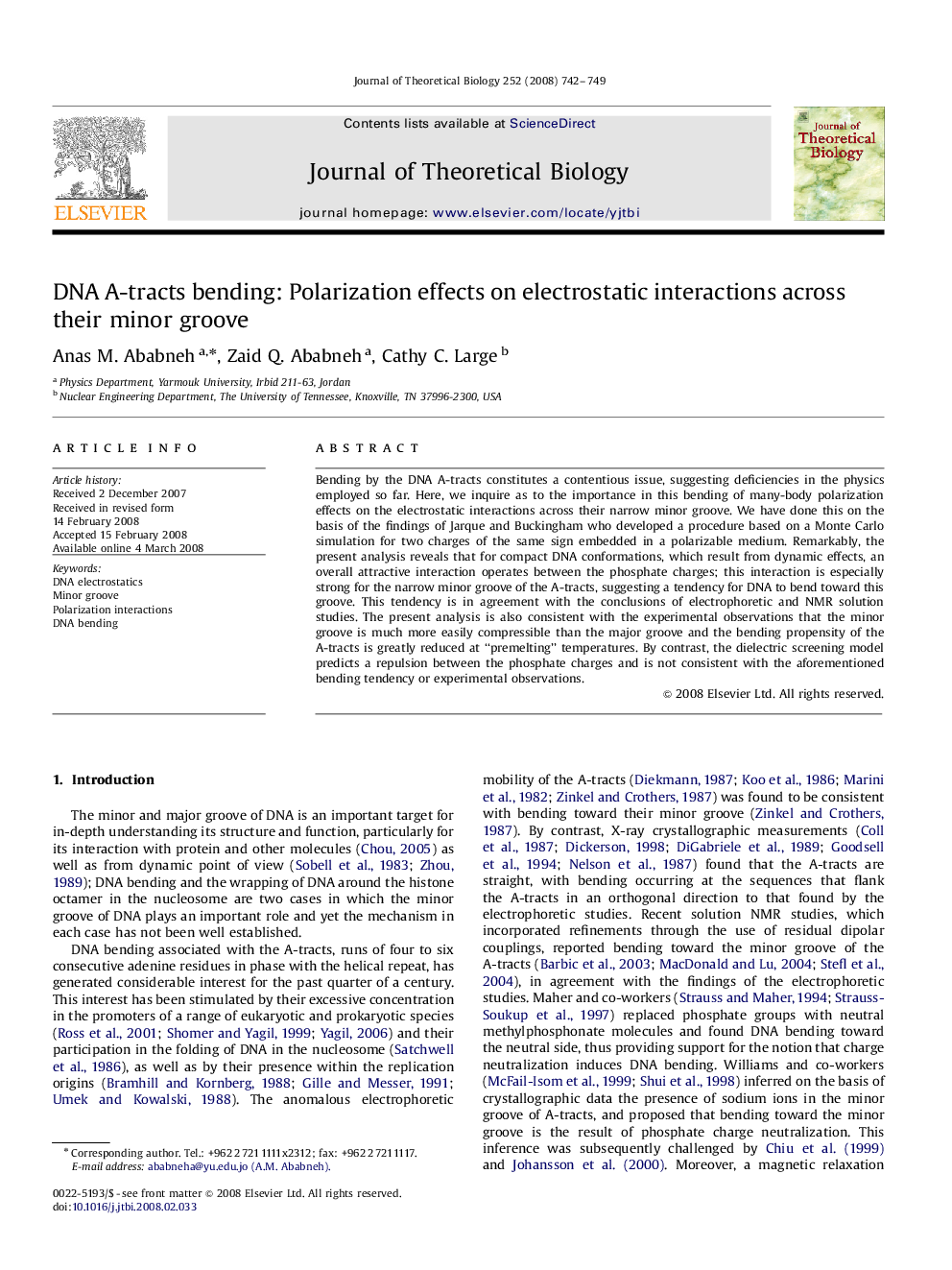| Article ID | Journal | Published Year | Pages | File Type |
|---|---|---|---|---|
| 4498533 | Journal of Theoretical Biology | 2008 | 8 Pages |
Bending by the DNA A-tracts constitutes a contentious issue, suggesting deficiencies in the physics employed so far. Here, we inquire as to the importance in this bending of many-body polarization effects on the electrostatic interactions across their narrow minor groove. We have done this on the basis of the findings of Jarque and Buckingham who developed a procedure based on a Monte Carlo simulation for two charges of the same sign embedded in a polarizable medium. Remarkably, the present analysis reveals that for compact DNA conformations, which result from dynamic effects, an overall attractive interaction operates between the phosphate charges; this interaction is especially strong for the narrow minor groove of the A-tracts, suggesting a tendency for DNA to bend toward this groove. This tendency is in agreement with the conclusions of electrophoretic and NMR solution studies. The present analysis is also consistent with the experimental observations that the minor groove is much more easily compressible than the major groove and the bending propensity of the A-tracts is greatly reduced at “premelting” temperatures. By contrast, the dielectric screening model predicts a repulsion between the phosphate charges and is not consistent with the aforementioned bending tendency or experimental observations.
